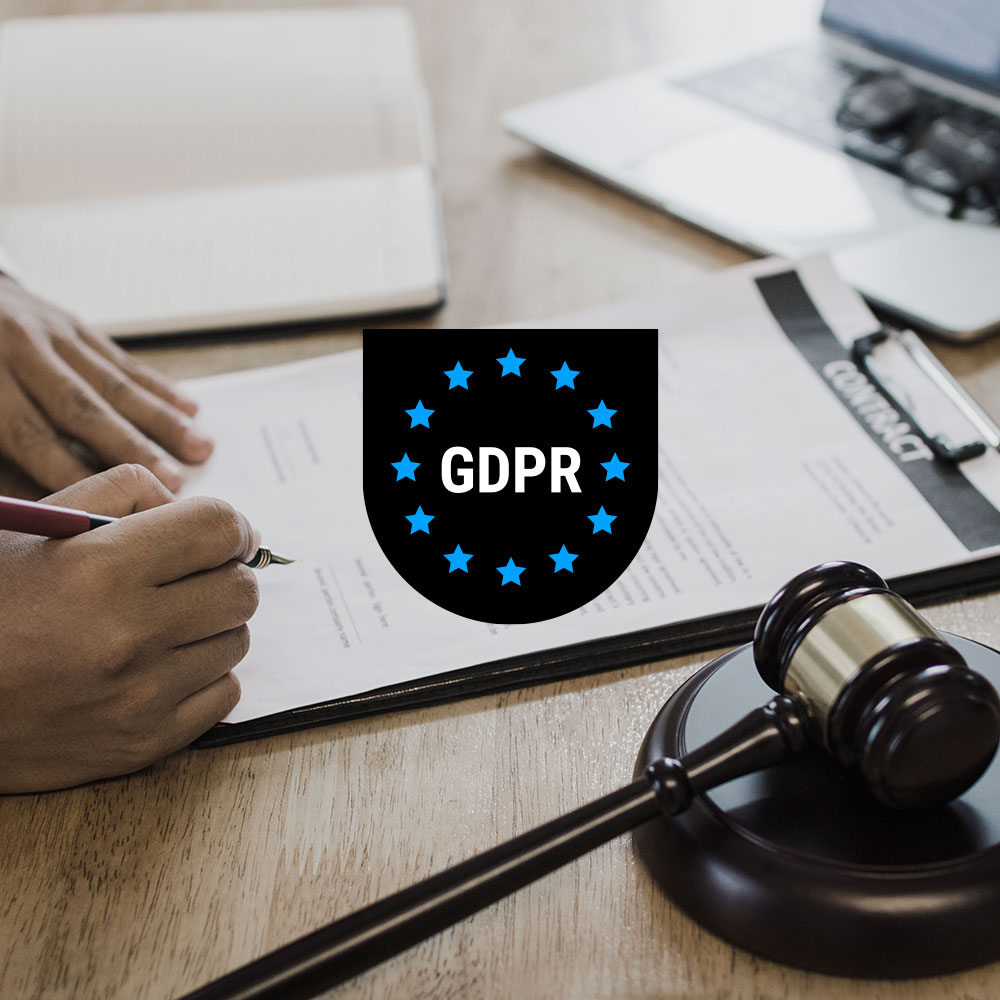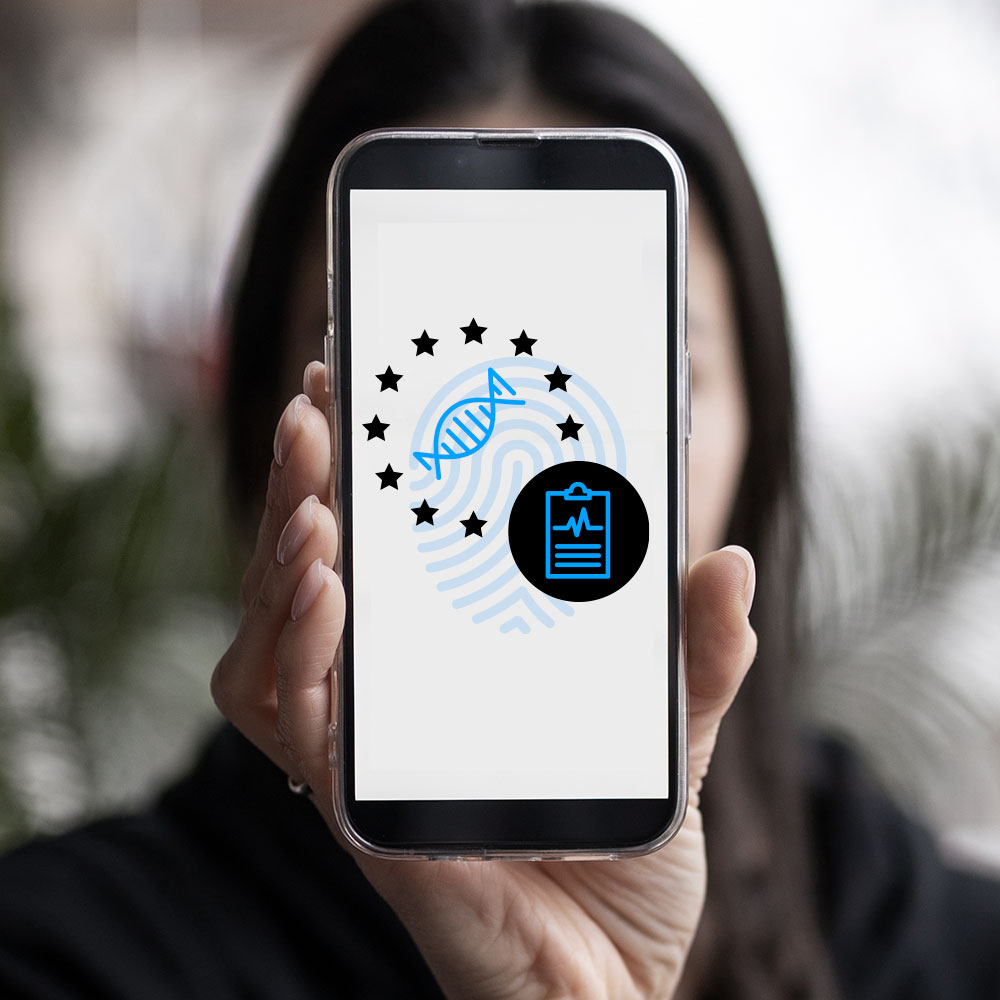In 2023, an estimated 101 million people in the European Union (EU) aged 16 and older — 27 percent of the population or one in four — were living with a disability. This group often faces significant challenges, including discrimination, poverty, and social exclusion, which can limit their full participation in society.
The European Accessibility Act (EAA) seeks to address these issues by improving access to products and services for people with disabilities and older adults across the EU. In this article, we examine the scope of the EAA, the products and services it covers, which businesses are required to comply, and the potential consequences of noncompliance.
What is the European Accessibility Act (EAA)?
The European Accessibility Act (EAA), passed in 2019, is an EU Directive created to standardize accessibility requirements across member states. Its goal is to improve access to products and services for people with disabilities, benefiting not only the millions of individuals living with disabilities, but also older adults who often face similar barriers. Member states are required to incorporate the EAA’s provisions into their own laws.
The EAA was passed in part to help fulfill the obligations of EU member states under the United Nations Convention on the Rights of Persons with Disabilities (CRPD). It adopts the CRPD’s definition of persons with disabilities: “persons […] who have long-term physical, mental, intellectual or sensory impairments which in interaction with various barriers may hinder their full and effective participation in society on an equal basis with others.”
The EAA is not the first directive to address the issue of accessibility in the EU. Directive (EU) 2016/2102, known as the EU Web Accessibility Directive, focuses on the accessibility of websites and mobile apps of public sector bodies. Unlike the EU Web Accessibility Directive, which applies to public sector bodies only, the EAA applies to the private sector as well, with certain exceptions.
What is the scope of the EAA?
The EAA applies to a wide range of products and services, helping to rectify previously inconsistent accessibility requirements for them across EU member states. These products and services are widely used in daily life by most people, so making them more accessible to people with disabilities helps with enabling them to be independent at home, more productive at work, etc.
The table below includes examples of categories and items to which the EAA applies, and shows the breadth of products and services that are required to be accessible to individuals (and, by contrast, how limiting a lack of accessibility can be).
| Industry | Category | Examples |
|---|---|---|
| Consumer technology | Consumer general purpose computer hardware systems and operating systems | Laptops, desktop computers, operating systems |
| Consumer terminal equipment for electronic communications services | Smartphones and tablets | |
| Consumer terminal equipment for accessing audiovisual media services | Smart TVs, streaming devices, video players, gaming consoles | |
| E-readers | Digital books, devices specifically designed for reading digital books | |
| Financial services | Consumer banking services | Online and mobile banking platforms, ATMs, point of sale devices for card transactions |
| Retail and ecommerce | Ecommerce services | Online marketplaces and retailer websites |
| Public transport and travel | Self-service terminals | Payment terminals, ATMs, ticketing machines at stations, check-in kiosks at airports, and information kiosks (not integrated into vehicles, aircraft, or ships) |
| Passenger transport services | Online booking websites and apps, mobile apps for real-time travel updates, e-tickets and ticketing services, and self-service terminals in transport hubs (not integrated into vehicles, aircraft, or ships) | |
| Media and communications | Electronic communications services | Internet service providers, mobile networks, VoIP services |
| Services providing access to audiovisual media services | Streaming platforms, public broadcasters, video-on-demand services, and satellite TV | |
| Emergency and essential services | 112 emergency number |
Who must comply with the EAA?
The EAA requires all products and services sold in the EU to be accessible to people with disabilities. This obligation applies to companies both inside and outside the EU if their products or services are available to EU-based consumers.
The directive identifies five categories, collectively referred to as economic operators, that must meet its requirements.
- Manufacturers: Individuals or businesses that market products under their own name or trademark that they either manufacture or have designed and manufactured.
- Authorized representatives: EU-based individuals or businesses authorized through a written agreement to act on behalf of a manufacturer for specific tasks.
- Importers: Individuals or businesses within the EU responsible for placing products from outside the EU onto the EU market for the first time.
- Distributors: Individuals or businesses making products available for distribution, consumption, or use in the EU but are not the manufacturer or importer.
- Service providers: Individuals or businesses offering services to consumers within the EU market.
Microenterprises are partly exempt from EAA compliance. They are defined as businesses with fewer than 10 employees and:
- annual turnover not exceeding EUR 2 million
or
- an annual balance sheet total not exceeding EUR 2 million
Microenterprises providing services are exempt from some accessibility requirements under the EAA. Microenterprises that manufacture products and claim that compliance would lead to significant changes or impose an unreasonable burden do not need to formally document this assessment. However, these manufacturers are still required to consider accessibility principles when designing their products and must still provide relevant facts to authorities, upon request, if they choose to rely on these exceptions.
When does the EAA go into effect?
The EAA required Member States to adopt its provisions into their national laws by June 28, 2022. These laws must take effect by that date as well. Because of this implementation date, the EAA is sometimes informally referred to as the “European Accessibility Act 2025.”
Exemptions to EAA effective date
The EAA applies to products placed on the market and services provided to consumers after June 28, 2025, but there are specific exemptions.
The directive provides for a transition period ending on June 28, 2030. During the transition period, service providers may continue using products that were already in use to provide similar services. Additionally, contracts signed before June 28, 2025 can remain in effect without changes, but they must end by June 28, 2030.
Transitional measures also apply to self-service terminals like ticket kiosks and ATMs. EU member states may decide that terminals in use before June 28, 2025 can remain operational until they are no longer economically viable. However, they cannot be used for more than 20 years from the date when they were first used, even if they are still functional.
The following website and mobile app content is also exempt from the EAA:
- pre-recorded time-based media published before June 28, 2025
- office file formats published before June 28, 2025
- online maps and mapping services, if essential information is provided in an accessible digital manner for maps intended for navigational use
- third-party content that is not funded, developed, or controlled by the organization required to comply
- archived content that is not updated or edited after June 28, 2025
Requirements for EAA compliance
The EAA requires products to be designed and manufactured so that they can be used by as many people with disabilities as possible. Products must also include clear, accessible information about how they work and their accessibility features, either on the product itself or in another accessible format, where possible.
Annex I of the directive details specific accessibility requirements, including design features, compatibility with assistive technologies, and accessible information.
Not all of the EAA’s requirements apply universally. The directive allows exceptions in cases where compliance would:
- result in a fundamental alteration to the nature of a product or service
- impose a disproportionate burden on businesses
Larger businesses must formally assess these situations using the criteria outlined in Annex VI. Microenterprises, while exempt from formal assessments, must still provide relevant facts to authorities if requested.
In addition to these requirements, the EAA outlines specific obligations of manufacturers, authorized representatives, importers, distributors, and service providers, which we’ll detail below.
Obligations of manufacturers
Manufacturers must meet several obligations under the EAA to make their products accessible. They must:
- design and manufacture products to meet accessibility requirements
- conduct a conformity assessment to verify that the product meets the relevant accessibility standards, and maintain supporting technical documentation
- prepare an EU Declaration of Conformity, which confirms that the product complies with all applicable EU directives
- affix the CE marking to products, indicating that they meet EU safety, health, environmental, and accessibility requirements
- establish processes to ensure that every product in a production run meets accessibility requirements
Products must include a type, batch, serial number, or other means of identification. If this is not possible because of the product’s size or nature, the information must be on the packaging or in an accompanying document.
The manufacturer’s name, registered trade name, or trademark, along with a contact address, must appear on the product. If these details cannot be placed directly on the product, they must appear on the packaging or an accompanying document. These details should be easy to understand and provide a way for consumers or authorities to reach the manufacturer.
Products must also include instructions and safety information in a language that users in the relevant country can easily understand. Labels and documents should be clear, simple, and accessible.
Obligations of authorized representatives
A manufacturer can appoint an authorized representative to handle specific tasks through a written agreement. The representative is not responsible for the manufacturer’s obligations related to the accessible design and manufacture of products or their technical documentation, but must:
- make the EU Declaration of Conformity and technical documentation available to relevant authorities for five years
- provide necessary information and documentation that demonstrates compliance to authorities upon request
- cooperate with authorities to address any issues or noncompliance with accessibility requirements for products under their mandate
Obligations of importers
Importers must ensure that the products they bring into the EU comply with the EAA. This includes verifying that:
- the manufacturer has conducted a conformity assessment
- the product complies with the accessibility standards outlined in Annex I
- the CE marking is correctly applied
- the products include relevant identification information and the manufacturer’s contact information
The importer’s name, trade name, or trademark and contact address should appear either on the product or its packaging or accompanying documents. Information and safety instructions in a language that is easy for consumers to understand must also accompany the product.
Importers must ensure proper storage and transport conditions to maintain compliance while the product is under their responsibility.
Importers are also responsible for keeping a copy of the EU Declaration of Conformity for five years and making technical documentation available to the relevant authorities upon request. These details should be clear and easy for both consumers and authorities to understand.
Additionally, importers must cooperate with national authorities during inspections and investigations, or when addressing noncompliance issues. They must take necessary measures to correct noncompliance or withdraw the product from the market if corrections cannot be made. They must also notify authorities immediately if they recognize that a product they have placed on the market is noncompliant, and maintain a record of such products and any related complaints.
Obligations of distributors
Distributors must ensure that the products they offer in the EU meet EAA accessibility standards. Specifically, they must confirm that:
- the product displays the CE marking to indicate compliance
- required accompanying documents, user instructions, and safety guidelines are provided in the official language(s) of the country where the product is sold
- the contact information of both the manufacturer and the importer as well as the product’s identification information are included on the product, its packaging, or accompanying documents
Like importers, distributors are also required to ensure proper storage and transport conditions to maintain compliance with accessibility requirements. If a distributor identifies or suspects noncompliance, they must withhold the product from the market until it meets accessibility requirements. In such cases, distributors must notify the manufacturer or importer and inform relevant authorities about the noncompliance and any corrective actions taken.
Distributors must cooperate with authorities during investigations and provide all necessary documentation to demonstrate the product’s compliance upon request. Unlike importers, distributors are not required to keep a formal record of noncompliant products or complaints.
Obligations of service providers
Service providers must design and deliver their services to meet the EAA’s accessibility requirements. They must prepare information that explains how their services meet these requirements, following the guidance in Annex V. This information must be made available in accessible written and spoken formats for people with disabilities, and must be kept available for as long as the service operates.
Service providers must also establish processes to maintain compliance with accessibility standards. These processes should account for any changes to service features, accessibility requirements, or relevant standards and specifications.
If a service is found to be noncompliant, service providers must take corrective measures and immediately notify the relevant authorities. They must provide details of the noncompliance, including the corrective actions taken.
Upon request, service providers must supply authorities with all necessary information to demonstrate compliance and cooperate fully with any actions taken to address noncompliance.
Enforcement of the EAA
Member states are responsible for developing procedures to verify whether products and services meet the European compliance standards. This includes appointing a specialized body to handle the duties of market surveillance or to conduct compliance checks for services.
If market surveillance authorities find a product noncompliant, they must immediately require the economic operator concerned to correct the issue. If the issue remains unresolved, authorities can require the product to be withdrawn from the market.
When market surveillance authorities believe noncompliance extends beyond their country, they must inform the European Commission and other member states of their findings and detail the actions that have been taken to address the issue.
Examples of noncompliance include:
- incorrectly affixing or failing to affix the CE marking
- missing or incorrectly prepared EU Declaration of Conformity
- missing or incomplete technical documentation
- missing, incorrect, or incomplete contact details for the manufacturer or importer
- failing to meet other obligations required of manufacturers or importers under the EAA
Consequences of noncompliance with the EAA
Failing to comply with the EAA can lead to serious consequences for businesses. Authorities may order noncompliant products to be removed from the market, and economic operators may face penalties under the national laws that implement the directive.
Each EU member state is required to set its own rules for penalties, which must be “effective, proportionate and dissuasive.” They should also include measures to address and correct noncompliance.
Penalties may include fines, which vary based on the country, the severity of the violation, the numbers of persons affected, and how many noncomplying products or services are involved. Some national laws, such as Ireland’s European Union (Accessibility Requirements of Products and Services) Regulations 2023, can also impose prison sentences. In Ireland, businesses face fines of up to EUR 60,000 or imprisonment of up to 18 months for violations.
Beyond legal penalties, noncompliance can harm a company’s reputation, erode user trust, and lead to customer losses. Organizations could also face legal actions from individuals or advocacy groups representing people with disabilities, which can lead to additional legal fees and damages.
Steps to prepare for EAA compliance
With national laws implementing the EAA taking effect on June 28, 2025, organizations offering relevant products and services in the EU must get ready to meet accessibility requirements.
1. Determine if the EAA applies to your business
Start by identifying whether your products or services fall under the EAA’s scope. Review the directive’s requirements and consider if any exemptions apply to your operations.
2. Conduct an accessibility audit
If your business is covered by the EAA, use the EAA’s requirements to evaluate your products, services, and processes for potential accessibility gaps.
3. Consult qualified legal professionals and accessibility experts
Engage legal and accessibility experts to better understand how the EAA applies to your operations. Their expertise can help align your compliance efforts with both legal and technical standards.
4. Document compliance efforts
Maintain clear records of all actions taken to meet the EAA’s requirements, including accessibility audits, testing outcomes, and updates. These records can demonstrate compliance in the event of regulatory inquiries or inspections.
5. Monitor regulatory updates
Stay informed about any changes to accessibility standards or enforcement rules. Keeping up to date with regulatory developments helps keep your compliance measures aligned with current requirements.
Usercentrics does not provide legal advice, and information is provided for educational purposes only. We always recommend engaging qualified legal counsel or privacy specialists regarding data privacy and protection issues and operations, and accessibility specialists regarding accessibility compliance.




